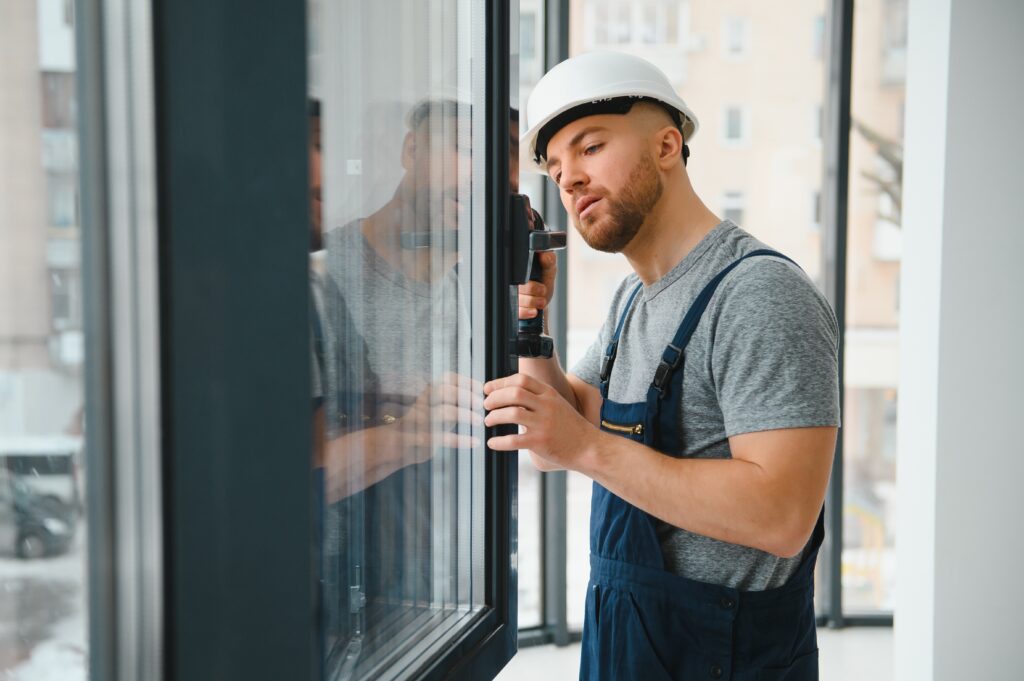Replacing windows in your home is an important project that can improve comfort, energy efficiency, and curb appeal. When we approach a window replacement, we consider several factors to ensure the best results. Understanding what your home needs and selecting the right materials are vital steps.
Before starting, we must evaluate the current windows to determine the scope of the project. Issues like drafts, condensation between panes, or difficulty opening and closing windows are signs that replacement is needed. By assessing these issues early, we can better plan for what comes next.
Assessing Your Window Needs
The first and most critical step in a window replacement project is assessing your current windows. We start by identifying any issues with your existing windows. Common signs that windows need replacement include drafts, visible damage like cracks or warping, and difficulty in opening or closing. Additionally, if you notice condensation between the panes, it indicates that the seal is broken, and the window’s insulating properties are compromised.
Another aspect to consider is energy efficiency. Older windows are likely to lose more heat during winter and allow more heat in during summer, causing your HVAC system to work harder. By evaluating how well your current windows perform in terms of insulation, we can determine if replacement is necessary to improve energy efficiency and comfort, and potentially lower your energy bills.
Choosing the Right Window Materials and Styles
Once we have a clear understanding of your needs, the next step is choosing the right materials and styles for your new windows. The material of the window frames can significantly affect their longevity, maintenance requirements, and energy efficiency. Common materials include vinyl, wood, aluminum, and fiberglass. Vinyl windows are popular due to their durability and low maintenance, whereas wood offers a classic look but requires more upkeep. Aluminum is strong but can conduct heat, making it less energy-efficient unless it has a thermal break. Fiberglass is a versatile and energy-efficient option, though it may come at a higher cost.
In addition to materials, selecting the right style is vital for both aesthetics and functionality. Double-hung windows offer easy cleaning and ventilation, making them a favorite for many homeowners. Casement windows, which open outward like a door, provide excellent ventilation and unobstructed views but may not be suitable for areas that open onto walkways. Slider windows are great for rooms with limited space, as they slide horizontally. Grid patterns and glass types, such as tempered or tinted glass, can further enhance the functionality and appearance of your windows. By carefully selecting the materials and styles that best fit your needs and preferences, we can ensure that your new windows will be both beautiful and functional.
Preparing Your Home for Window Installation
Preparation is critical to ensuring a smooth window installation process. We start by removing any obstacles around the windows, such as curtains, blinds, and furniture. This allows the installation team to work efficiently without risking damage to your belongings. It’s also wise to cover nearby furniture and floors with protective sheets to guard against dust and debris.
Next, we take steps to protect sensitive areas around the work site. This includes adding padding or plastic sheeting to protect walls and floors from scratches and other damage. Clearing outside areas is equally important, especially if windows are being installed on higher floors. We ensure that the area around the exterior of the windows is free of plants, outdoor furniture, and other obstructions to provide safe access for the installation team.
Ensuring Proper Installation and Post-Installation Care
Proper installation is key to maximizing the performance and longevity of your new windows. We use professional techniques to ensure a secure and precise fit. This includes checking for square and level openings and making adjustments if necessary. Proper insulation around the window frame is also crucial; we apply foam or caulk to fill any gaps, preventing air leaks and improving energy efficiency.
After installation, we focus on post-installation care to maintain your windows in top condition. This involves removing all debris and conducting a detailed inspection to ensure everything is in perfect order. For ongoing maintenance, we recommend cleaning the windows regularly with mild soap and water and checking the seals and frames for any signs of wear. By following these steps, you can enjoy the benefits of your new windows for many years to come.
Conclusion
Replacing windows is an essential home improvement project that greatly enhances comfort, energy efficiency, and aesthetic appeal. By carefully assessing your needs, selecting suitable materials, and preparing your home properly, you ensure a successful installation process. Taking these steps not only boosts your home’s value but also provides you with long-lasting benefits.
We understand that window replacement in Homewood can feel daunting, but with the right approach, it becomes a smooth and rewarding endeavor. If you’re ready to upgrade your windows and improve your home’s efficiency and comfort, reach out to BMR Homes Inc. Remodeling and Restoration today. Our team is dedicated to guiding you through every step of the process, ensuring your project is completed to the highest standards. Contact us to transform your home and enjoy the best in quality and service.

